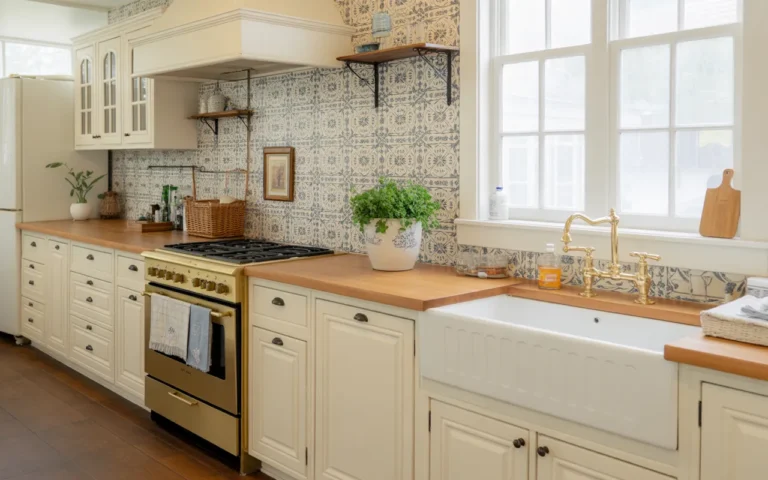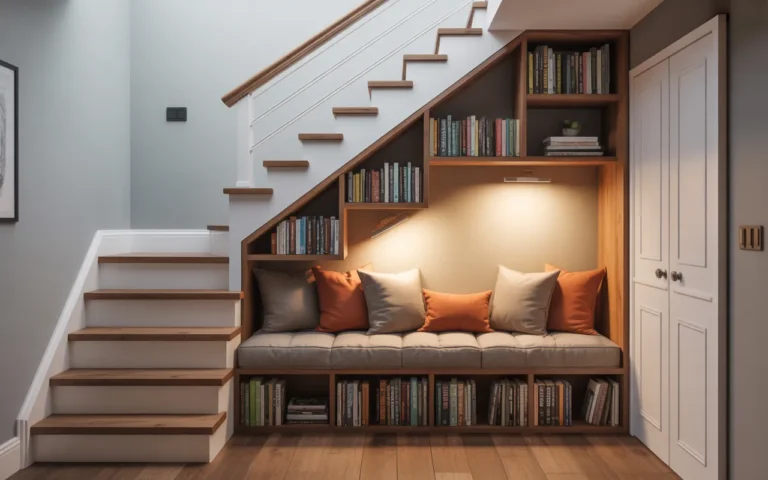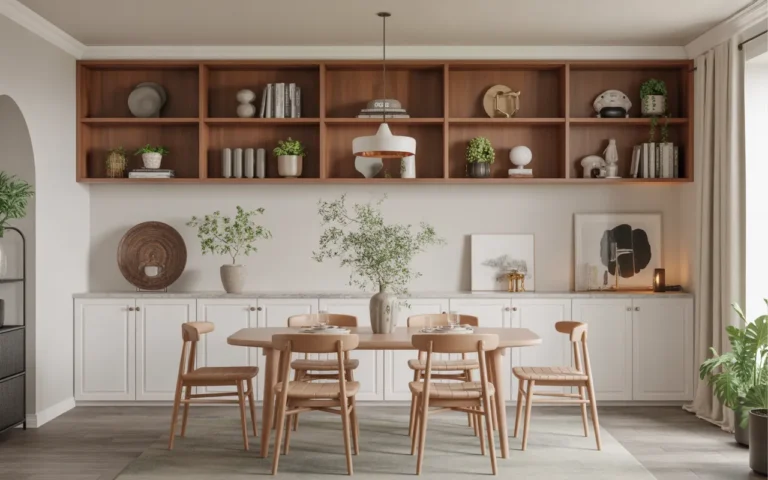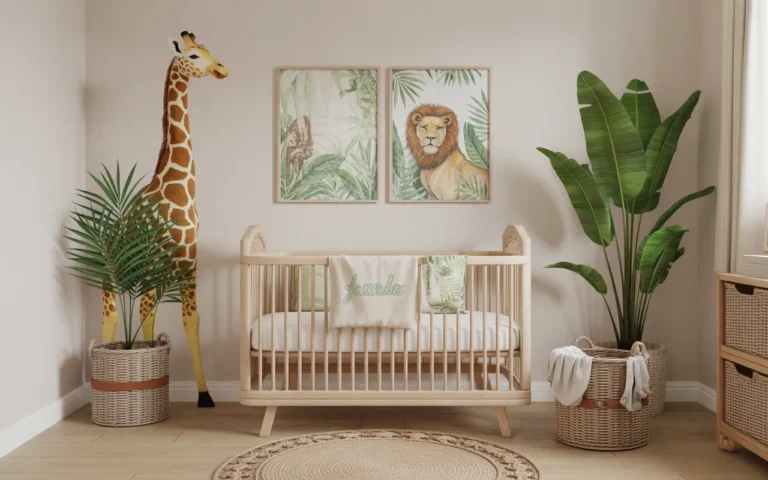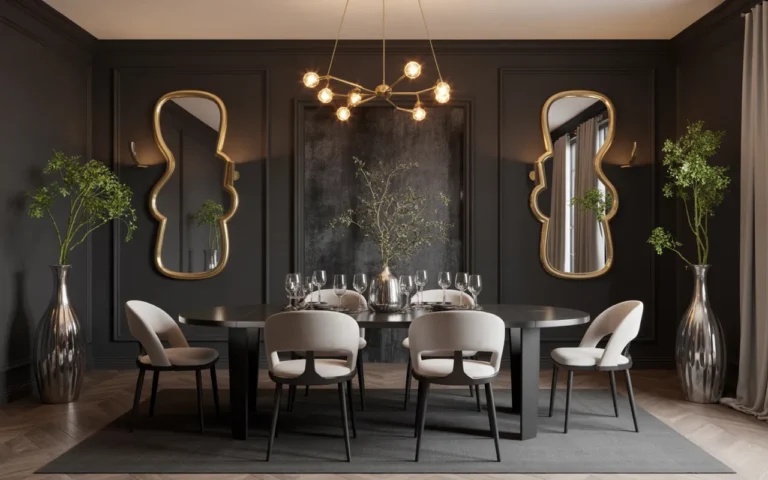Seamless Living + Dining Spaces: 24 Ideas to Try

Looking for stylish ways to create harmony between your living and dining spaces? Whether you have an open-concept home or a smaller layout, thoughtful design choices can make both rooms feel connected yet distinct. From bold accent walls and statement ceilings to coordinated color palettes and clever furniture ideas, these tips will help you achieve a seamless flow. Each idea blends practicality with style, making it easy to design a home that’s both functional and Pinterest-worthy. Let’s dive into 24 inspiring concepts!
Cozy Open Concept with Neutral Tones

Neutral tones are a timeless way to create cohesion between a living and dining area. Beige, cream, and light wood pair beautifully to open up a space and give it an airy feel. This design balances comfort with sophistication, making it perfect for homes that prioritize light and flow. Pinterest readers love neutrals because they’re versatile and work across modern, farmhouse, or minimal interiors.
To achieve this look, layer similar shades across both rooms with rugs, curtains, and throws. Consider natural fabrics like linen or cotton to maintain a relaxed vibe. Carrying wood elements into both rooms—whether in tables, shelves, or accents—keeps everything tied together. A couple of indoor plants will round out the space with a fresh, natural finish.
Sleek Glass Divider for Subtle Separation

A glass divider is an elegant solution for homeowners who love open layouts but want subtle distinction between spaces. Unlike solid walls, glass keeps sightlines open and allows natural light to flow freely, preventing either room from feeling closed off. This option is ideal for modern and urban-style homes where sleek finishes elevate the design.
Styling with glass gives you flexibility—pair black frames with industrial interiors or brass for a glamorous touch. You can also soften the divider by adding sheer curtains or frosted panels for privacy. The best part is that this creates definition without disrupting the easy flow between living and dining zones.
Statement Lighting to Unite Both Areas

Lighting is a powerful design element that not only enhances function but also connects spaces visually. Using coordinating fixtures in both living and dining areas creates a seamless thread between them. A bold chandelier, paired with striking pendants, draws attention upward and unifies the look with symmetry and elegance.
To recreate this, focus on finishes—matching brass, black, or chrome across fixtures ensures cohesion. Dimmer switches allow you to adjust ambiance easily, making the space versatile for cozy evenings or lively gatherings. Consider mixing different fixture shapes for visual interest, as long as they share similar tones or materials.
Area Rugs That Define Each Zone
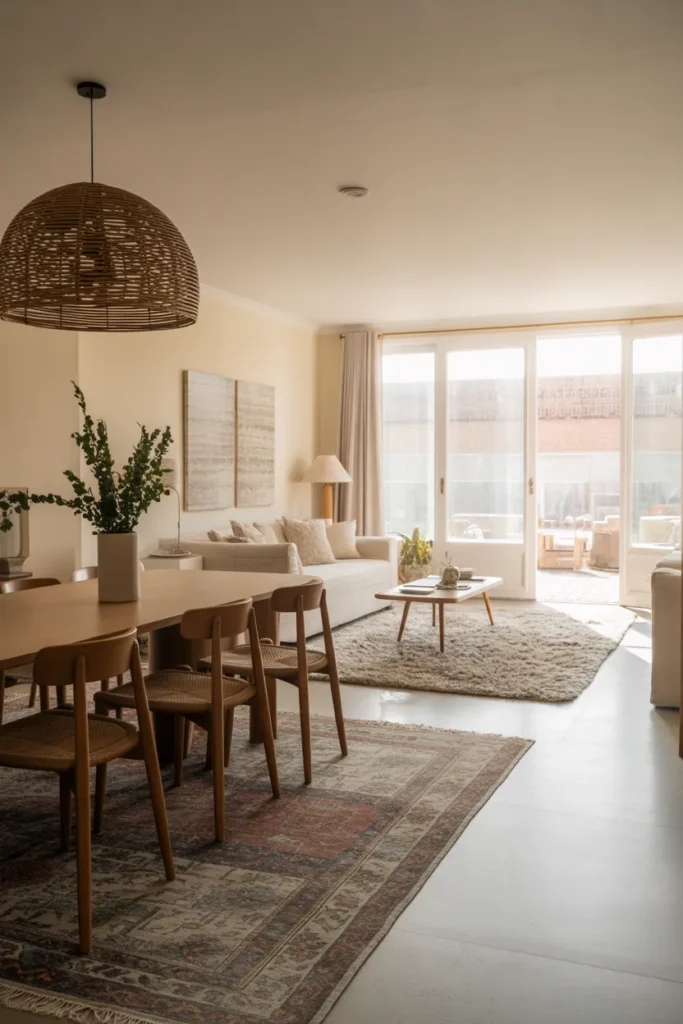
Rugs are an effortless way to anchor open spaces and create visual separation between living and dining areas. They provide warmth, comfort, and texture while helping each zone feel distinct yet connected. Choosing complementary rugs ensures both rooms maintain flow without feeling overly uniform.
To achieve balance, pair a subtle neutral rug in the living area with a more patterned option under the dining table. Stick to a consistent color palette to avoid visual clutter. Layering textures, like jute under a soft wool rug, can add depth while still keeping everything tied together.
Matching Color Palette for Harmony

A consistent color palette is one of the easiest ways to connect living and dining areas. Repeating the same tones across furniture, textiles, and décor ensures both spaces feel harmonious and well thought-out. A shared palette instantly creates balance, even if the styles differ slightly.
The key is to select two or three core colors and use them in different ways throughout the rooms. For example, carry a green tone from the living room sofa cushions into the dining area’s table runner. Accent walls, art, or decorative objects are other fun ways to reinforce color continuity.
Built-In Shelving as a Shared Feature

Built-in shelving is a smart way to merge function and style while connecting living and dining areas. A shared unit provides storage and display space while visually tying both rooms together. Whether you prefer minimal open shelves or dramatic floor-to-ceiling cabinetry, this design choice elevates any interior.
To keep it cohesive, style the shelves with a mix of practical items and decorative accents. Repeating materials like wood, ceramics, or glass creates unity. Use baskets or boxes to hide clutter while leaving space for plants or artwork to bring personality into both rooms.
Sliding Barn Doors for Flexible Flow

Sliding barn doors are an eye-catching way to separate or connect your living and dining areas depending on your needs. Their rustic charm adds character while also providing functional flexibility. You can close them for intimate dining or slide them open for open-concept entertaining.
For a polished look, paint or stain the barn doors in a color that complements both spaces. Hardware in matte black or brushed gold can tie into other design details like light fixtures or cabinet pulls. They’re perfect for farmhouse, rustic, or even modern eclectic homes.
Consistent Flooring for Seamless Transition
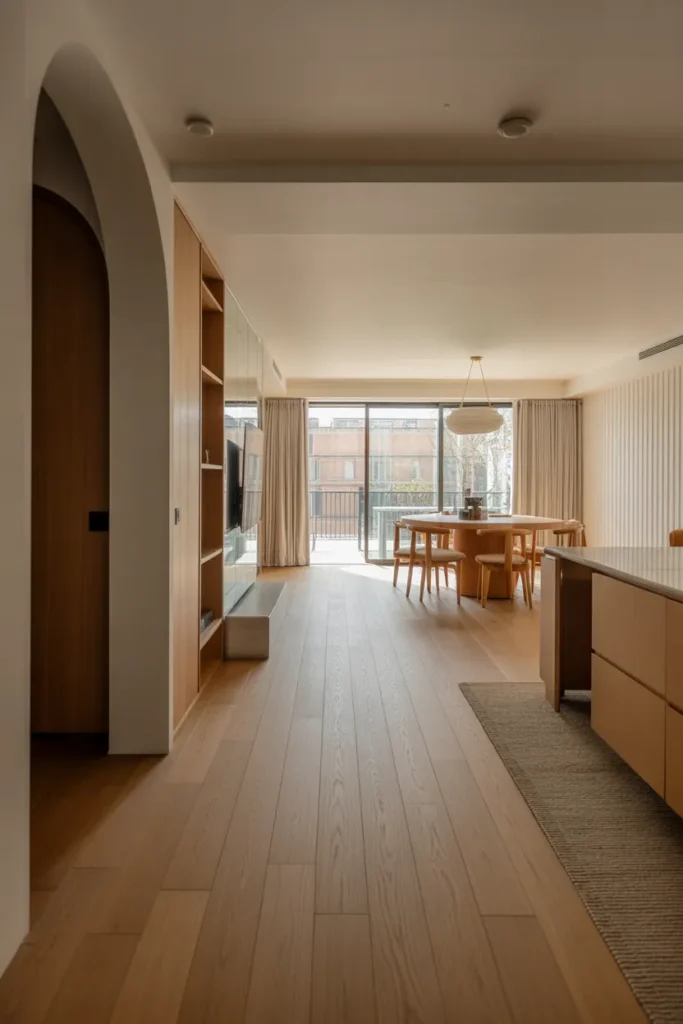
One of the simplest yet most effective ways to connect living and dining spaces is by using consistent flooring. A uniform surface creates a natural flow, making the rooms feel larger and more cohesive. Hardwood, polished concrete, or luxury vinyl planks are great options for this approach.
To add definition without interrupting flow, incorporate rugs, low furniture, or subtle shifts in lighting. Keep finishes consistent—if you choose warm-toned wood floors, balance them with neutral or earthy décor to maintain harmony across both spaces.
Accent Wall That Spans Both Rooms
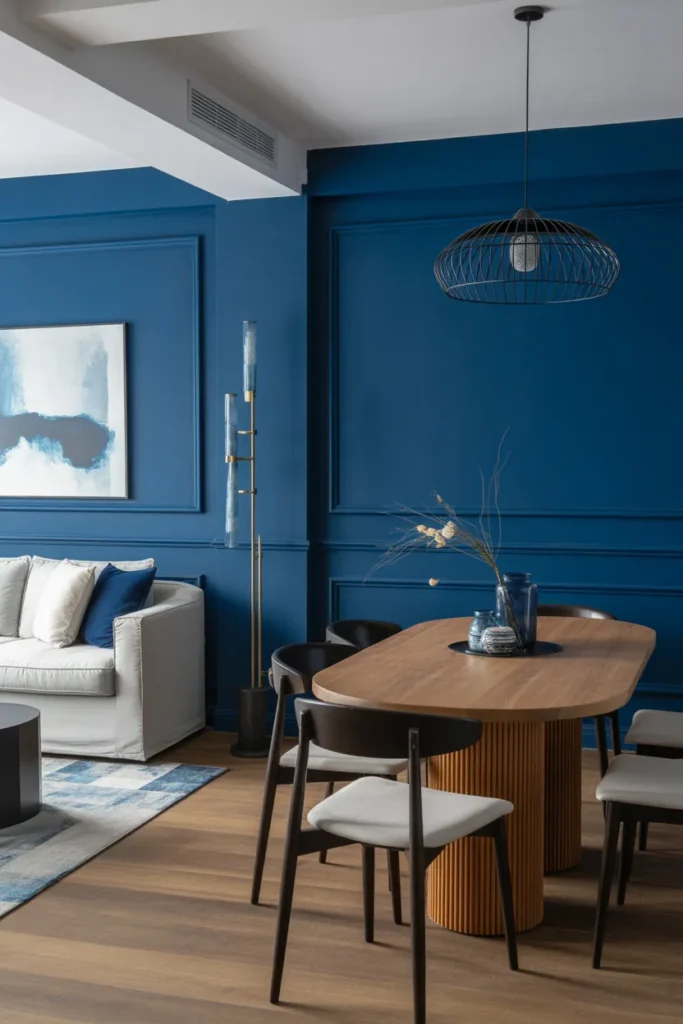
A continuous accent wall is a bold and stylish way to link living and dining spaces. Carrying a color or texture across both areas creates instant cohesion, while making a dramatic design statement. It works especially well in open layouts where walls naturally connect both zones.
Choose a color that complements your furniture and décor. Deep jewel tones, moody charcoal, or even patterned wallpaper can set the mood. To balance the boldness, keep surrounding furniture and textiles more neutral so the accent wall remains the focal point.
Coordinated Artwork for Visual Unity

Artwork is a versatile tool to visually connect separate spaces. By using coordinated prints, paintings, or photography, you create a sense of flow between living and dining zones. The repeated theme or palette makes the rooms feel curated and intentional.
Opt for frames in the same finish—black, wood, or metallic—for a cohesive look. You can hang artwork in symmetrical arrangements or create gallery walls that balance each other across the two spaces. This approach also allows you to express personality while keeping everything tied together.
Dual-Purpose Furniture for Shared Use
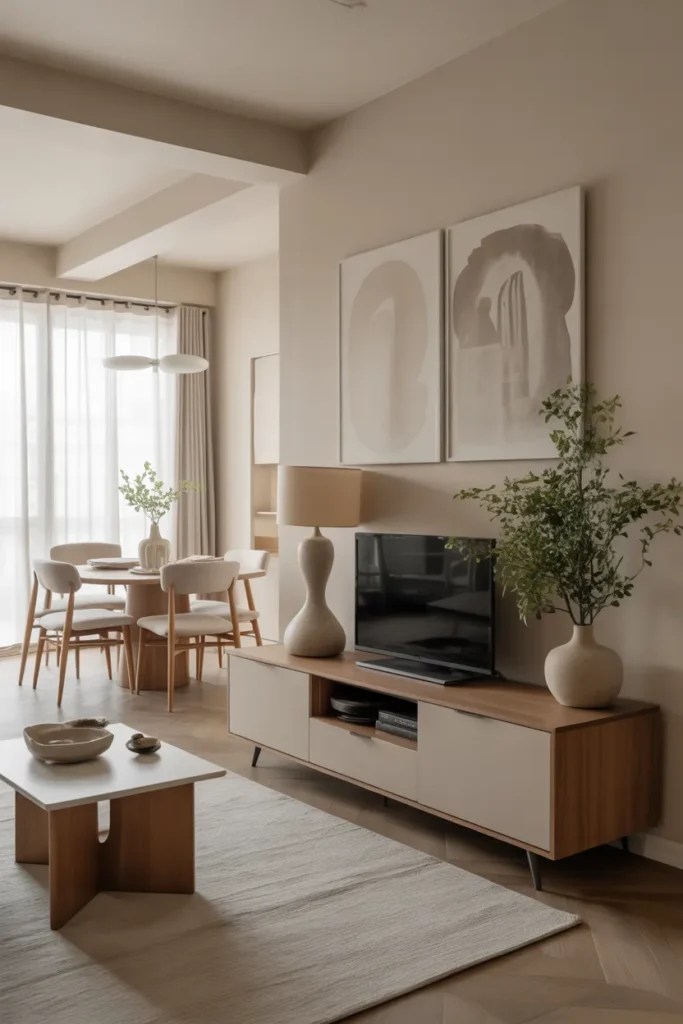
Dual-purpose furniture is a practical way to connect living and dining areas, especially in smaller homes or apartments. Shared pieces—like a console, shelving unit, or storage bench—bridge both zones functionally and visually. They create flow while also maximizing square footage.
Look for pieces with clean lines and versatile finishes that work equally well in both settings. For example, a wood console can display books in the living room while holding serving ware in the dining area. Matching accessories, like lamps or vases, will further strengthen the connection.
Statement Fireplace as a Central Feature

A fireplace is the ultimate anchor in a home, and when placed between living and dining areas, it becomes a natural connector. It offers warmth, ambiance, and a strong design focal point that draws both rooms into one cohesive story.
Depending on your style, opt for a sleek gas fireplace with minimalist stone cladding or a traditional brick hearth for rustic charm. Styling both sides with coordinated décor—like vases, artwork, or plants—ensures balance while keeping the fireplace as the star feature.
Open Shelving to Showcase Style

Open shelving is a stylish way to visually connect your living and dining areas while adding personality. By running shelves along a shared wall, you create continuity that links both spaces effortlessly. This approach works especially well in modern and Scandinavian-inspired interiors where clean lines are key.
Keep your styling consistent—repeat colors, textures, and shapes across both zones. Group décor items in threes or fives for balance, and mix functional pieces like bowls or baskets with decorative accents. Plants and books are great choices to add warmth while keeping things unified.
Coordinated Window Treatments

Window treatments can make or break a room’s cohesion. Using the same curtains, blinds, or shades across your living and dining areas creates instant harmony. The continuity feels intentional and helps tie together furniture and color schemes.
For a timeless look, choose light, neutral fabrics like linen or cotton. If you prefer drama, opt for bold patterns or deep hues, but be sure to carry them through both spaces. Even small details, like matching curtain rods or hardware, make a big difference in creating a polished finish.
Shared Statement Ceiling
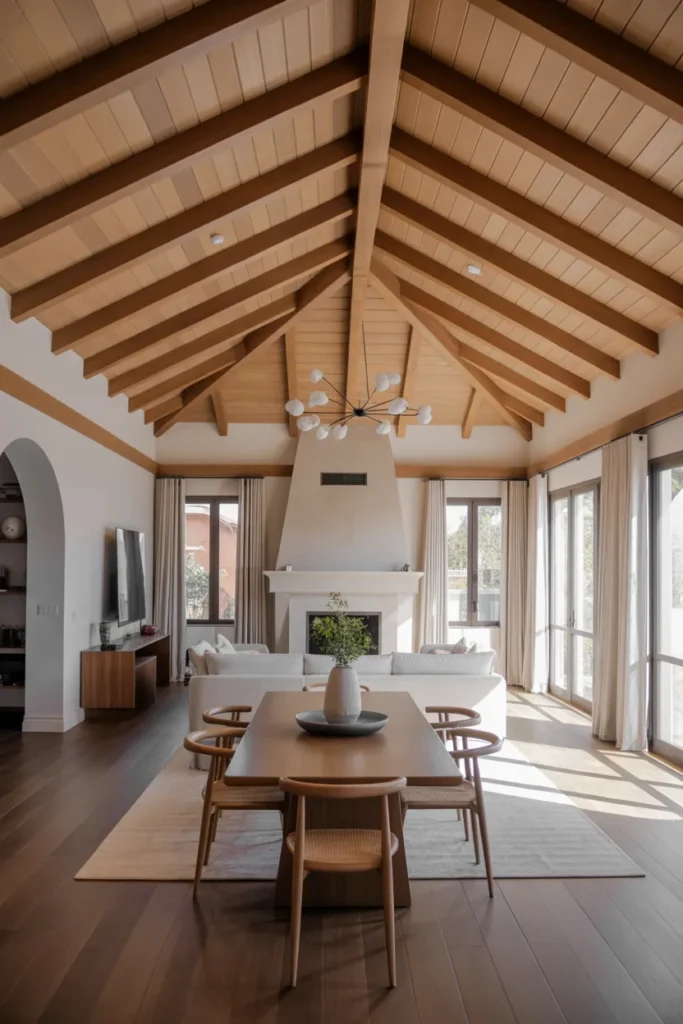
A statement ceiling is an underrated way to connect living and dining spaces. Exposed beams, coffered ceilings, or even a bold paint color overhead can visually unify both zones while adding dramatic impact. This works especially well in homes with high ceilings or open layouts.
To style this look, choose a ceiling feature that complements your overall décor. For rustic charm, wood beams are perfect. For modern appeal, try painted ceilings or geometric designs. Adding pendant lighting that aligns with ceiling details can strengthen the connection between both areas.
Mirrored Accents for Visual Flow

Mirrors are not just functional—they’re powerful design tools that enhance flow and openness. When placed strategically in both living and dining spaces, mirrors bounce light and create visual continuity. They’re perfect for small or dark rooms that need a boost of brightness.
To maintain cohesion, select mirrors with matching or complementary frames. Oversized mirrors can serve as bold focal points, while smaller ones can be grouped for a gallery effect. Pairing mirrors with metallic accents or glass tables will amplify the airy feel throughout both spaces.
Unified Furniture Style

Matching furniture styles across living and dining areas creates instant harmony. Whether you love mid-century, farmhouse, or industrial design, sticking to one theme ensures the two spaces feel intentionally connected rather than mismatched.
This doesn’t mean everything has to be identical—vary the pieces to keep things interesting. For example, pair a mid-century sofa with a dining set that features similar wood tones and clean lines. Accent with rugs, cushions, or table runners that echo the same design era.
Indoor Plants as Natural Connectors
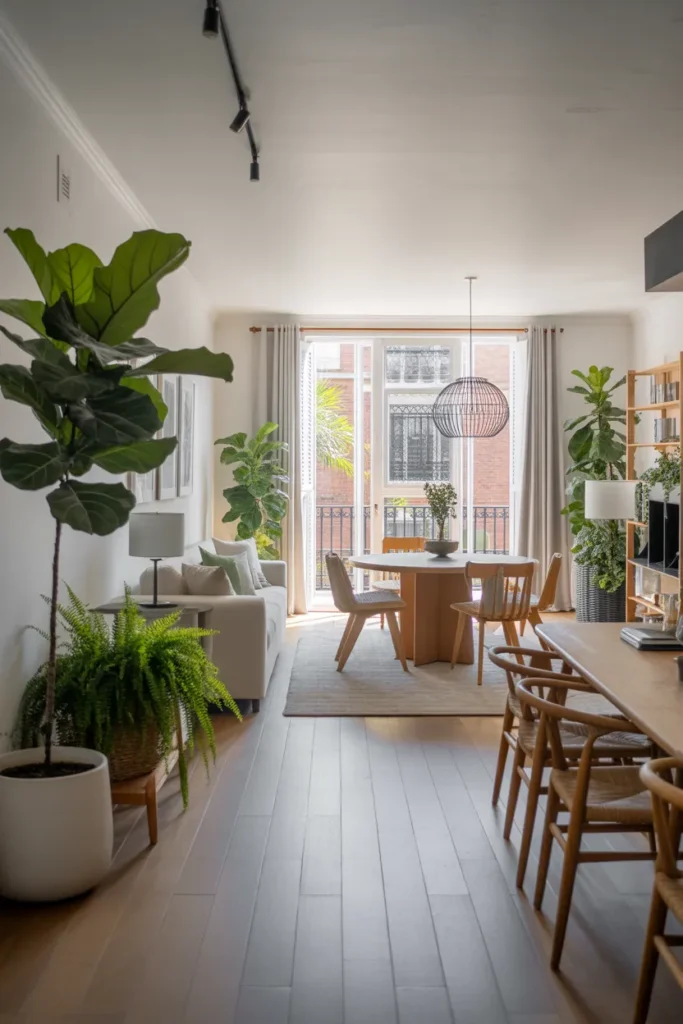
Indoor plants are a beautiful, budget-friendly way to connect living and dining areas. They bring life, color, and texture while naturally blending two zones together. Plants also soften modern interiors and make large open spaces feel warm and inviting.
Choose a mix of tall floor plants and smaller tabletop greenery to create balance. Keep planters in a consistent style—woven baskets, ceramic pots, or sleek metallic finishes—for visual unity. Seasonal flowers or trailing plants can be rotated for a fresh, ever-changing look.
Open Archways for Elegant Flow
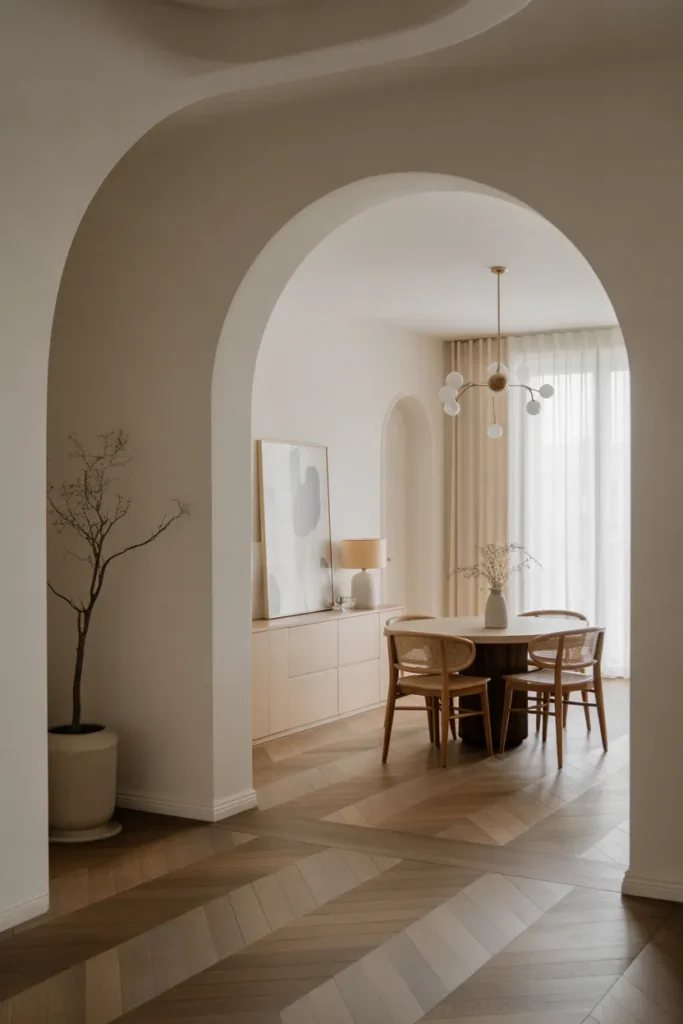
Open archways are a classic way to connect living and dining spaces while maintaining an air of elegance. They allow for easy flow between zones without the heaviness of solid walls. Arches add character and charm, making the design feel more architectural and intentional.
To make this feature stand out, highlight the arch with subtle paint or trim details. Neutral tones keep the look classic, while bold colors or wallpaper inside the arch can add a playful twist. Pairing arches with soft lighting enhances the inviting effect.
Coordinated Dining + Living Accessories
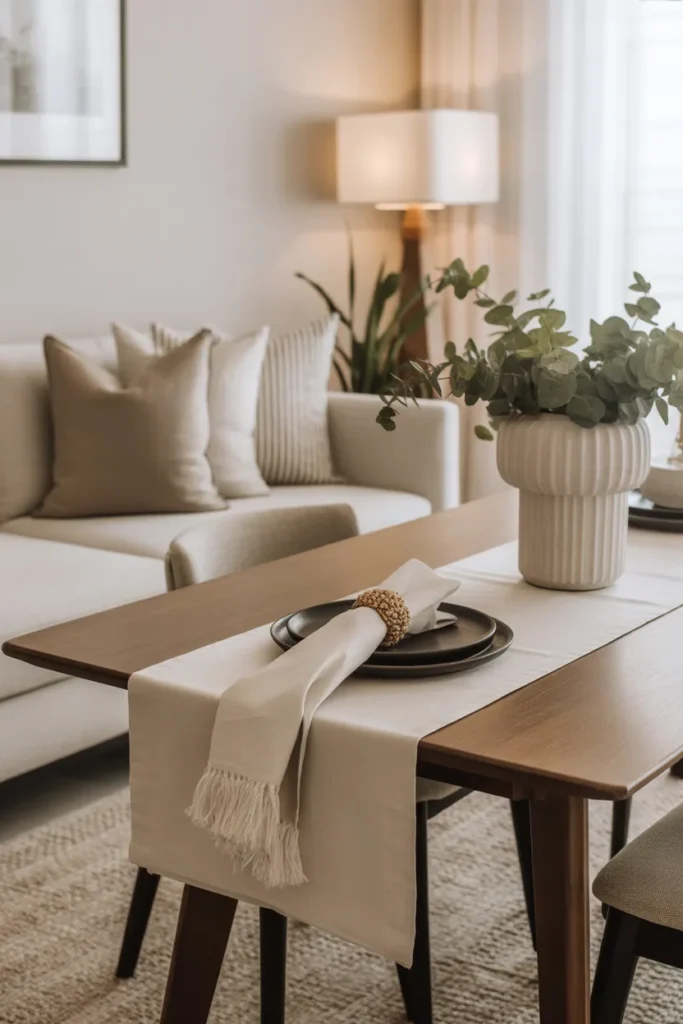
Sometimes it’s the little things that create the strongest sense of connection. Coordinating accessories—like cushions, throws, napkins, or vases—can subtly unify living and dining spaces. This approach is simple yet highly effective for Pinterest-inspired looks.
Choose two or three key accents and repeat them across both areas. For example, carry a bold print from sofa pillows into your dining linens, or use metallic candle holders in both rooms. These details bring harmony without requiring major renovations or big changes.
Layered Lighting for Flexible Ambiance
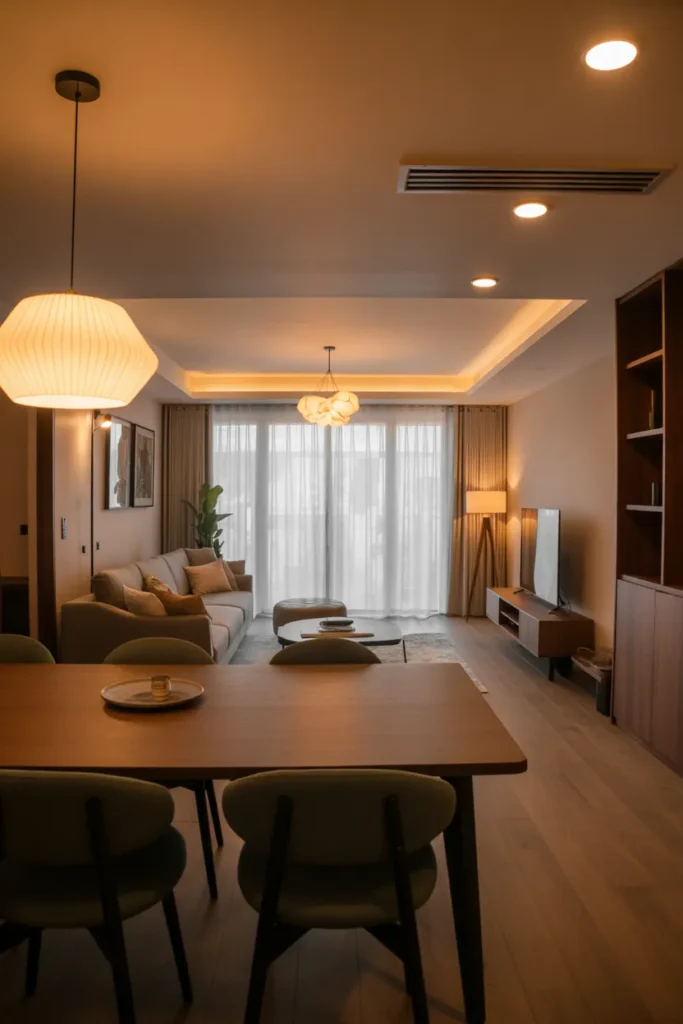
Layered lighting is essential for spaces that serve multiple functions. By using different types of lighting—ambient, task, and accent—you can set the perfect mood in both living and dining areas. This approach connects the two spaces while ensuring flexibility for daily life.
Consider recessed lights for general brightness, pendants or chandeliers over the dining area, and floor or table lamps for the living zone. Stick to similar finishes or lamp styles so the rooms feel cohesive. Adding dimmers will let you easily shift from entertaining to relaxing.
Textural Balance Across Both Zones
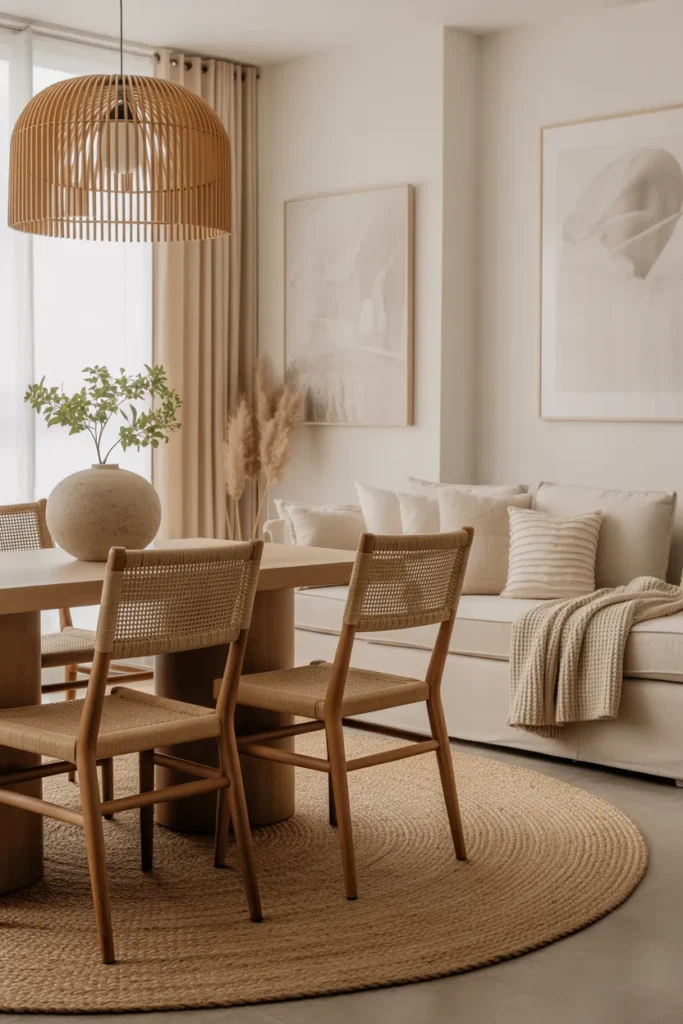
Texture is an often-overlooked design element that can seamlessly connect two spaces. By repeating similar materials—like wood, wicker, or textiles—you create a tactile balance that feels cohesive and inviting. This approach works especially well in bohemian, coastal, or rustic interiors.
To pull this off, choose a few signature textures and carry them into both areas. For instance, pair woven dining chairs with a jute rug in the living room. Layer cozy textiles like throws or cushions to reinforce the tactile connection between spaces.
Minimalist Layout for Effortless Connection
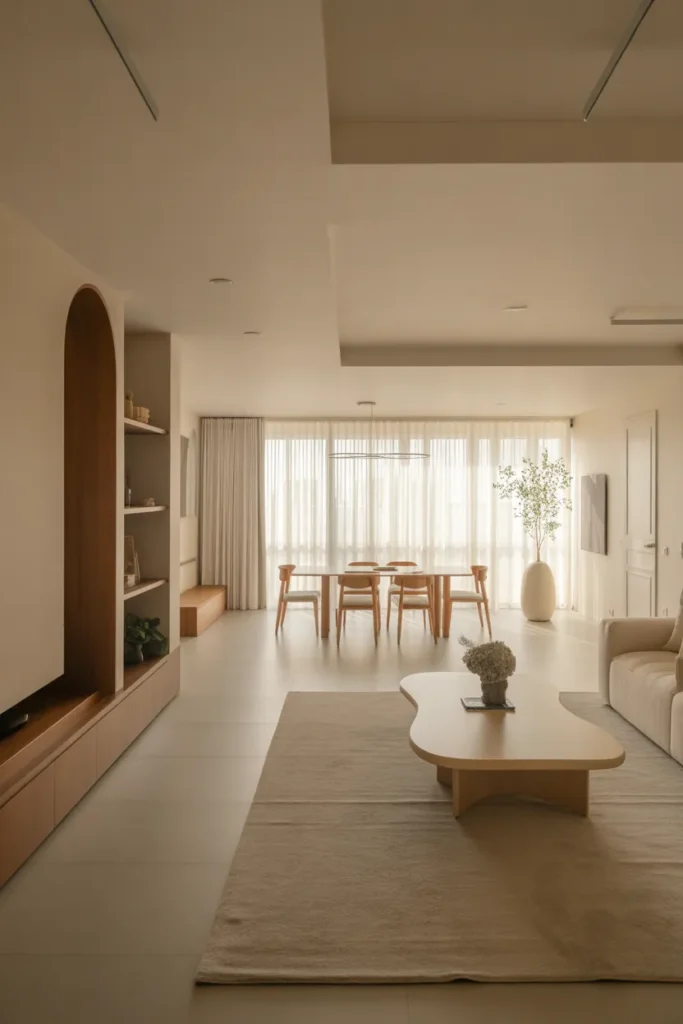
Minimalism naturally connects spaces by removing excess and focusing on essentials. A pared-back layout with clean lines ensures that living and dining zones flow into each other without distraction. This style is perfect for those who prefer calm, clutter-free interiors.
Stick to a restrained palette of neutrals or monochrome for maximum cohesion. Choose multifunctional furniture and keep surfaces clear of unnecessary décor. Incorporating natural light and a few carefully chosen statement pieces will keep the design simple yet impactful.
Bold Contrast to Highlight Connection
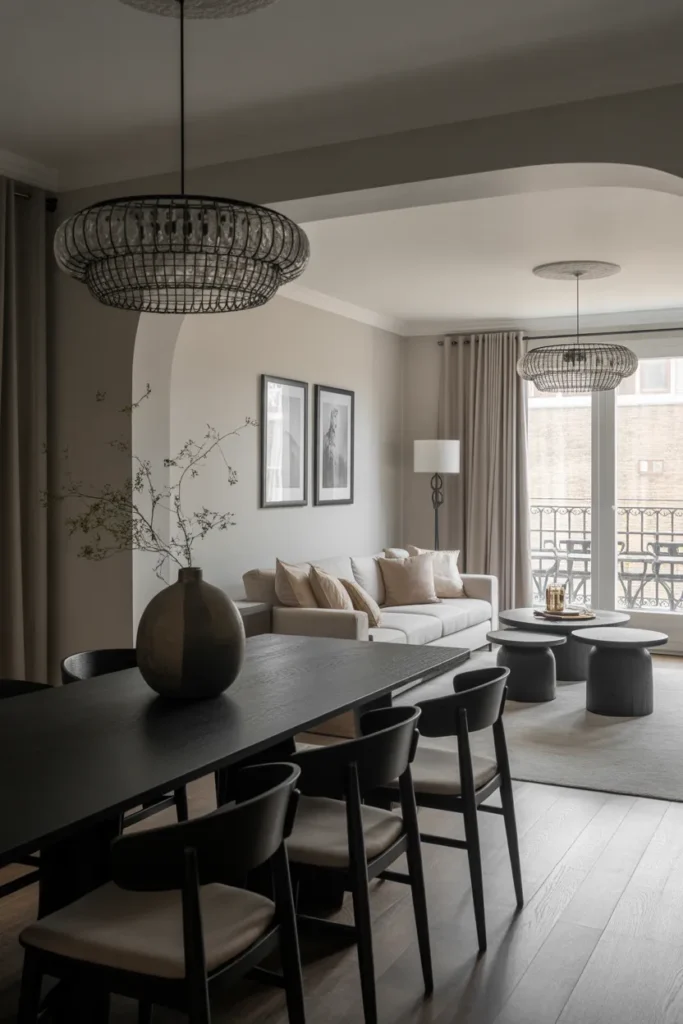
Bold contrast is a creative way to link living and dining areas. Instead of blending everything, you highlight differences while tying them together with subtle repeated details. This approach creates drama and visual interest without breaking cohesion.
To nail the look, pick one strong contrast—such as light vs. dark or matte vs. glossy—and carry it across both zones. Balance the boldness with unifying accessories, like artwork or lighting, to prevent the contrast from feeling disjointed. The result is modern, stylish, and unforgettable.
Conclusion
Connecting your living and dining spaces doesn’t have to be complicated. With the right mix of color, texture, lighting, and layout, you can create a home that feels stylish and cohesive while reflecting your personality. From simple accessories to architectural features, each idea offers a chance to enhance flow and functionality. Try a few of these tips to find what works best for your space—and watch your living and dining areas come together beautifully.

